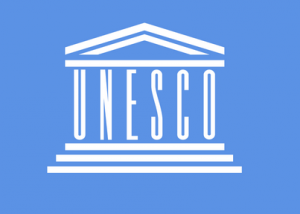Financial aid to education globally falls slightly in 2017 as UK cuts back – UNESCO
 One of the ambitious goals of the world captured in the Sustainable Development Goal 4, which is ensure inclusive and equitable quality education and promote lifelong learning opportunities for all, with its seven targets and three means of implementation, may suffer some setbacks, as funding for education is being cut back.
One of the ambitious goals of the world captured in the Sustainable Development Goal 4, which is ensure inclusive and equitable quality education and promote lifelong learning opportunities for all, with its seven targets and three means of implementation, may suffer some setbacks, as funding for education is being cut back.
UNESCO’s Global Education Monitoring Report for 2017, found that aid to education in that year, totaled $13.2 billion, down 2 per cent or $288 million compared to 2016, a press release copied to ghanabusinessnews.com says.
The figures show the levels of aid to education continue to stagnate, growing by only 1 per cent per year on average since 2009.
“Much of the cut to total aid to education can be explained by the United Kingdom decreasing its aid to education by 29 per cent, of which 60 per cent was a drop in its allocation to basic education. From being the second largest donor to total basic education in 2016, it has fallen to fourth place in 2017 with $517 million,” the report said.
It notes that, overall, Germany tops the donor scoreboard for aid to education, disbursing $2 billion in 2017, followed by the United States with $1.5 billion and France with $1.3 billion.
“France was the donor that increased its funding the most from 2016 to 2017, by a total of $207 million. This is in line with the announcement that France would increase its official development assistance to 0.55 per cent of its gross national income by 2022,” it said.
The report indicates however that, 58 per cent of Germany’s and 69 per cent of France’s aid is directed at scholarships and imputed costs for students from developing countries to study in their tertiary education institutions.
“If these items were excluded, the remaining aid to education would have decreased even more over the past year, by 5 per cent or $534 million, as aid to higher education increased, while aid to secondary education fell by 2 per cent and aid to basic education by 8 per cent between 2016 and 2017,” it added.
The report states that donors have not met their promises to keep to the UN target of 0.7 per cent of gross national income to foreign aid. Doing just that and allocating 10 per cent of that aid to primary and secondary education, would have been enough to fill the $39 billion annual financing gap. Yet, education has become less of a priority for development partners, with the share of education falling from a peak of 10.7 per cent of total aid in 2007 to just 7.1 per cent in 2017. Of the top ten OECD donors to education, the United Kingdom is the only G7 country dedicating the UN target figure of 0.7 per cent of its gross national income to foreign aid.
“A drop in aid to education could be something to celebrate if it looked like it was due to governments needing less, but this doesn’t seem to be the case. Governments in low income countries spend, on average, 16 per cent of their budgets on education, far more than richer countries, and are off track meeting even the 2015 target of universal primary education. With no action from donors to support them, it’s even less likely that our ambitious education goal will be reached,” Manos Antoninis, director of the Global Education Monitoring Report says, adding that the trends are alarming.
The report argues that the fall in aid raises questions about the global commitment to achieving SDG 4, the global education goal.
“An increasingly fragmented architecture for financing education is not helping. A new multilateral mechanism, the International Financing Facility for Education, which aims to lower the cost of borrowing for education for middle income countries, is expected to be announced later this month,” it added.
By Emmanuel K. Dogbevi
Copyright ©2019 by Creative Imaginations Publicity
All rights reserved. This article or any portion thereof may not be reproduced or used in any manner whatsoever without the express written permission of the publisher except for the use of brief quotations in reviews.
